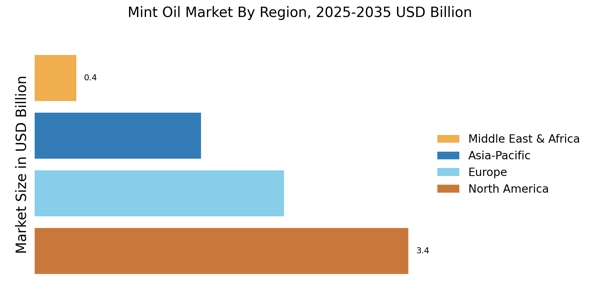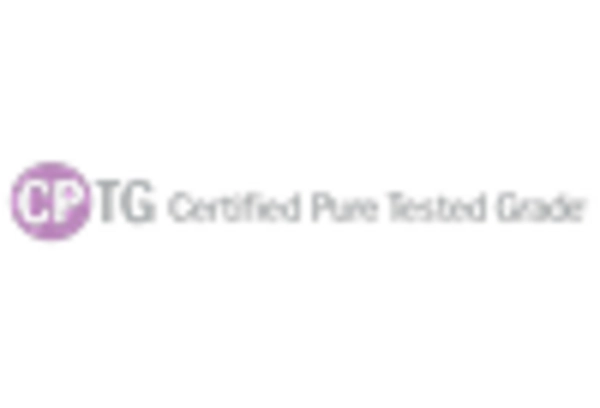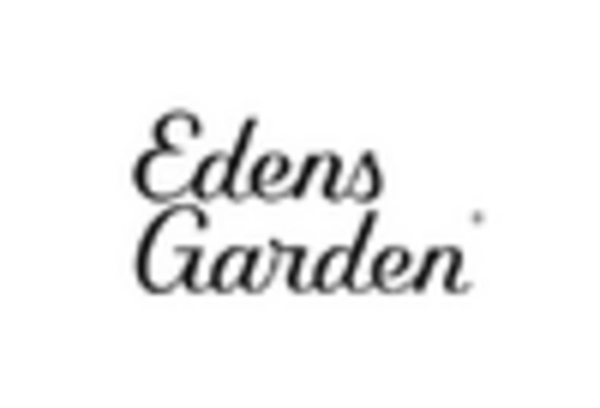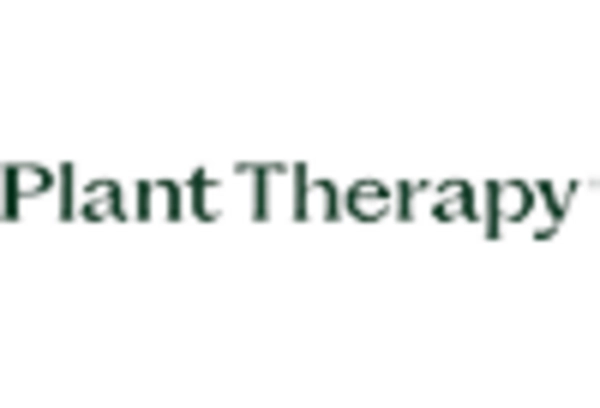Rising Popularity of Aromatherapy
The Mint Oil Market is benefiting from the growing popularity of aromatherapy practices. Mint oil is often used in essential oil blends for its invigorating scent and potential therapeutic benefits. The aromatherapy market is anticipated to expand at a rate of approximately 7% annually, driven by increasing consumer awareness of mental health and wellness. As individuals seek natural remedies for stress relief and relaxation, mint oil's refreshing aroma is likely to gain traction among consumers. Furthermore, the integration of mint oil in diffusers and massage oils enhances its appeal in the wellness community. This trend suggests that the Mint Oil Market could see substantial growth as more consumers incorporate aromatherapy into their daily routines, potentially leading to increased sales and market penetration.
Expansion of the Pharmaceutical Industry
The Mint Oil Market is also influenced by the expansion of the pharmaceutical sector. Mint oil is utilized in various medicinal formulations due to its therapeutic properties, including its ability to alleviate digestive issues and respiratory ailments. The pharmaceutical market is projected to grow steadily, with an increasing focus on natural remedies and herbal products. This shift towards natural ingredients is likely to enhance the demand for mint oil in medicinal applications. Additionally, the rise of alternative medicine practices may further drive the Mint Oil Market, as consumers seek holistic approaches to health. As the pharmaceutical industry continues to evolve, the integration of mint oil into new formulations could present lucrative opportunities for producers, potentially leading to increased market share.
Increasing Use in Food and Beverage Sector
The Mint Oil Market is experiencing a notable surge in demand from the food and beverage sector. Mint oil is widely utilized as a flavoring agent in various products, including candies, chewing gums, and beverages. The market for mint-flavored products has shown a growth rate of approximately 5% annually, driven by consumer preferences for natural flavors over synthetic alternatives. This trend is likely to continue as health-conscious consumers increasingly seek products that align with their dietary choices. Furthermore, the incorporation of mint oil in culinary applications, such as sauces and dressings, enhances its appeal. As the food and beverage industry continues to innovate, the Mint Oil Market is poised to benefit from these developments, potentially leading to increased market share and profitability for producers.
Consumer Preference for Sustainable Products
The Mint Oil Market is witnessing a shift in consumer preferences towards sustainable and eco-friendly products. As environmental concerns become more prominent, consumers are increasingly seeking products that are ethically sourced and produced. Mint oil, often derived from sustainable farming practices, aligns well with this trend. The market for sustainable products is expected to grow significantly, with consumers willing to pay a premium for items that reflect their values. This shift is likely to encourage producers in the Mint Oil Market to adopt sustainable practices, thereby enhancing their brand image and attracting environmentally conscious consumers. Furthermore, as regulations surrounding sustainability tighten, companies that prioritize eco-friendly practices may gain a competitive edge, potentially leading to increased market share and profitability.
Growth in Personal Care and Cosmetic Products
The Mint Oil Market is significantly influenced by the expanding personal care and cosmetic sector. Mint oil is recognized for its refreshing properties and is commonly found in products such as shampoos, lotions, and oral care items. The Mint Oil Market is projected to grow at a compound annual growth rate of around 4% over the next few years, with mint oil playing a crucial role in this expansion. Consumers are increasingly drawn to products that offer natural ingredients, and mint oil's antimicrobial and soothing properties make it a preferred choice. Additionally, the rise of organic and natural personal care products is likely to further bolster the demand for mint oil, as brands seek to differentiate themselves in a competitive market. This trend indicates a promising future for the Mint Oil Market within the personal care segment.


















Leave a Comment